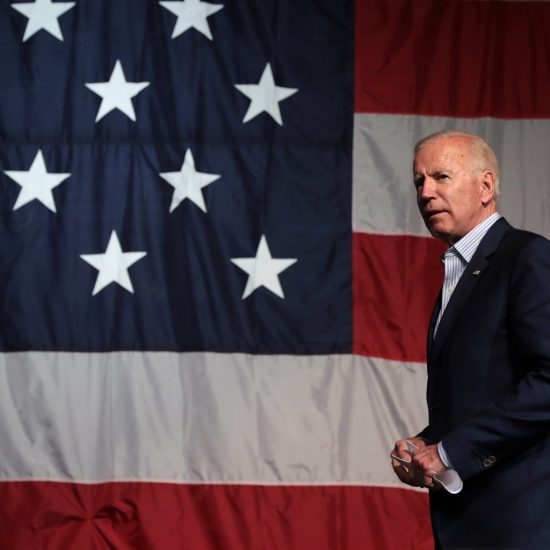
‘Burdensome new regulatory regime’
During the most recent fiscal year, the government entered into or modified contracts with nearly 70,000 companies or their subsidiaries to deliver hundreds of thousands of distinct goods and services.
To figure out which companies to hire, agencies begin by posting solicitations, usually on FedBizOpps.gov, where registered contractors can sift through opportunities. When an agency puts out a solicitation, dozens of companies might submit proposals. Each one, in theory, should be vetted to ensure it is a cost-conscious, responsible seller.
Federal guidelines offer some clues along these lines: How solid are the company’s finances? How did it perform on previous contracts, if any? Businesses that fall into certain categories — including small, veteran and minority-owned enterprises — may be given preference.
When contracting officers need to research a company’s history, they can access the Past Performance Information Retrieval System, or PPIRS. But the information kept in the database doesn’t include contractor compliance with labor laws. And some of the data PPIRS pulls in from other databases like the Federal Awardee Performance and Integrity Information System or FAPIIS, is not reliable.
The 2013 Senate report, for example, found that energy company BP had no misconduct entries in FAPIIS related to the 2010 Deepwater Horizon offshore oil rig explosion, which killed 11 workers and sullied the Gulf of Mexico with 4 million barrels of crude oil. The accident prompted the U.S. Environmental Protection Agency to ban BP from all federal contracts for 16 months, but the ban wasn’t reflected in the database.
The Office of Federal Procurement Policy, which oversees contracting standards, issued a memo in 2013 calling for staff to submit company performance reviews more often. It found that such reviews were entered less than 30 percent of the time at some agencies, leaving the government “vulnerable to poor acquisition outcomes in the future.”
Obama’s executive order expanded procurement guidelines to include a review of would-be contractors’ labor records. The subsequent Labor Department rule required contracting staff to consider a company’s history of compliance with 14 labor laws. Among them were the Fair Labor Standards Act, which covers wages; the Occupational Safety and Health Act; and laws forbidding discrimination on the basis of race, sex, religion and disability, to name a few. The rule required any company seeking a contract to check a box to indicate whether it had blemishes on its record, going back three years.
The vehicle for the rule’s undoing by Congress was the rarely used Congressional Review Act, through which recently finalized regulations can be dismantled by simple majorities in the House and Senate. The act prohibits federal agencies from crafting similar rules in the future unless authorized to do so by Congress.
Even without the short-lived regulation, companies that break the law on a federal job can be debarred or suspended from receiving further contracts. Last year, the Labor Department debarred 49 firms.
“The [Obama] executive order was not intended to deny a contractor an award, or to send them to suspending and debarring; it was about getting them into compliance,” said Lafe Solomon, who joined the Labor Department in 2014 to develop what became the Fair Pay and Safe Workplaces rule. Specialists would help agencies decide how to address violations by contractors. Companies with more serious violations would be allowed to develop corrective plans.
Among the 939 written comments on the rule sent to the Labor Department were letters of support from groups such as the International Association of Machinists and Aerospace Workers and individuals such as William Clegg, who used to work for a halfway house under contract with the federal government in Greensboro, North Carolina.
“If I hadn’t been living with my mother, I would have been sleeping on the street with what I was getting paid and would have been forced to go on public assistance,” Clegg wrote. “How safe do you think our communities [will be] when we can’t pay a living wage to those that assist with our safety?”
But the rule was wildly unpopular with many contractors and their trade associations. Associated General Contractors of America, for example, denounced an early version as “unfounded, unnecessary, unworkable and unlawful.”
The AGC’s regulatory counsel, Jimmy Christianson, elaborated in an interview. The government, he said, should improve its own contractor vetting instead of laying the burden on companies.
“You’re the federal government,” Christianson said. “You’re the ones that are citing the contractors, don’t you have the information? Why does the contractor have to report it? Isn’t that kind of a joke?”
Two other trade groups went further than AGC. In October, Associated Builders and Contractors and the National Association of Security Companies sued the Labor Department and other agencies responsible for the rule’s implementation weeks before its first phase was to kick in. The groups called the rule unlawful, saying contractors could be penalized for cases that had been settled with no admissions of guilt or were still being contested.
“A cumbersome and burdensome new regulatory regime is being created to implement this misguided executive policy, which … violates the rights of government contractors, at considerable cost and with no benefits to taxpayers,” the complaint said.
A federal district court in Texas agreed that the groups had a strong case. The night before the rule was to have gone into effect, Judge Marcia Crone, who was appointed by President George W. Bush in 2003, enjoined most of its requirements, though one aspect was preserved: paycheck transparency. Employers that received contracts after January 1 had to give employees breakdowns of their pay rates and benefits so they could monitor their own paychecks for accuracy.
On the Senate floor March 6, Sen. Elizabeth Warren, D-Mass., urged her colleagues not to side with vested interests and vote for a resolution that would spell near-certain doom for the rule. “Instead of creating jobs or raising wages, they’re trying to make it easier for the companies that get big-time, taxpayer-funded government contracts to steal wages from their employees and injure their workers without admitting responsibility,” she said.
But the political muscle of government contractors is hard to overestimate.
In fiscal year 2016, the defense industry, which did $297.5 billion in business with the government, collectively spent $126 million on lobbying and gave almost $13 million to candidates for federal office — 59 percent to Republicans and 41 percent to Democrats, according to data compiled by the Center for Responsive Politics.
The construction industry, whose contracting totaled $28.6 billion, spent $52.2 million on lobbying and gave $32.6 million to candidates for federal office – 67 percent to Republicans and 33 percent to Democrats.




